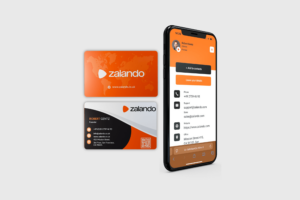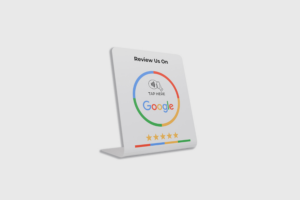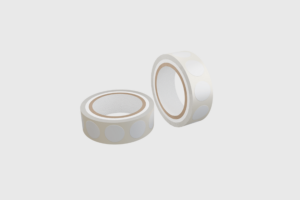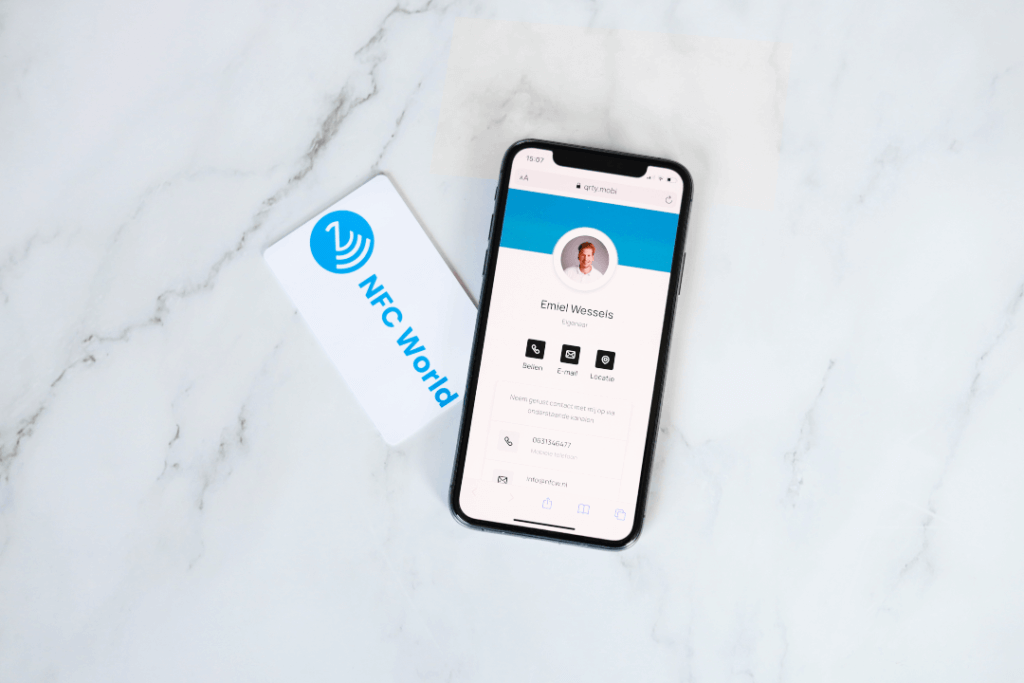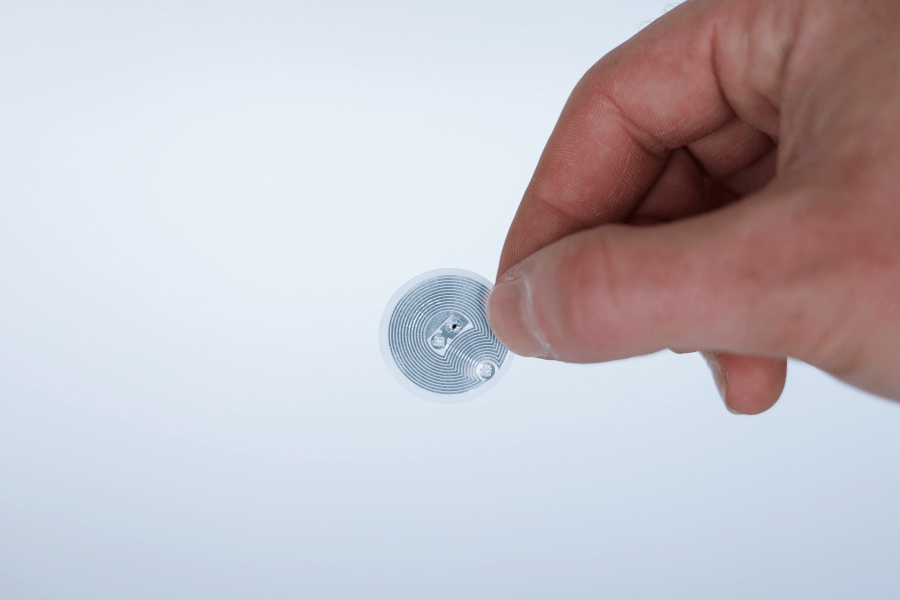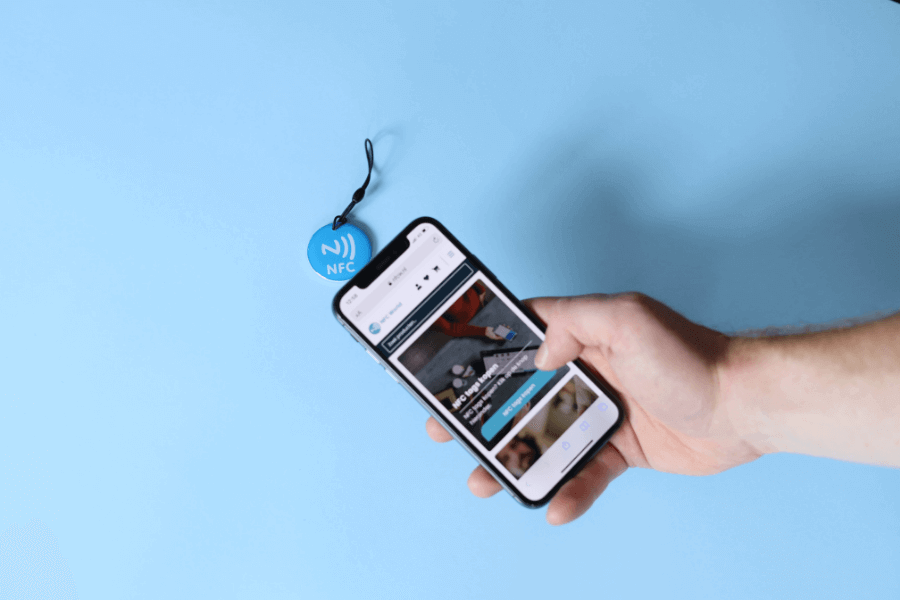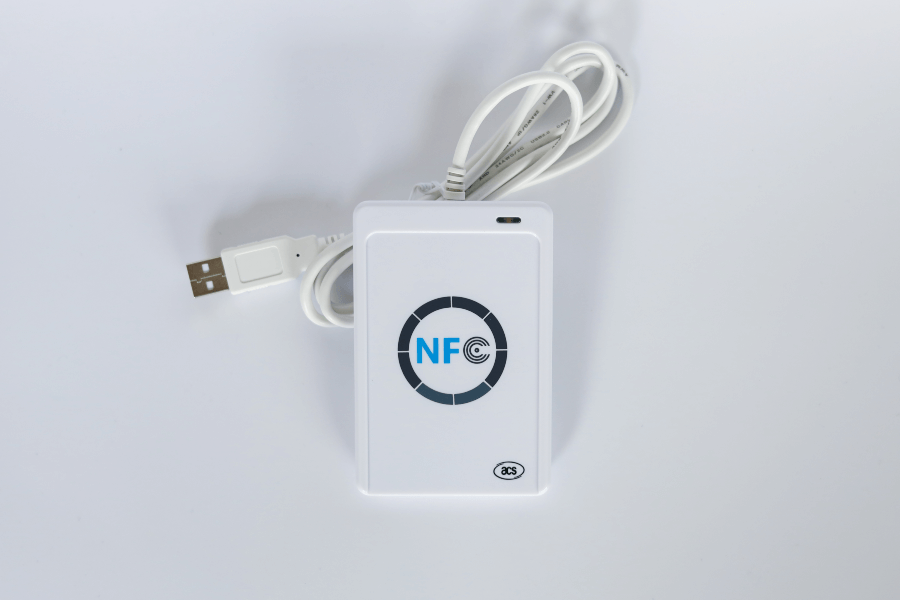No products in the cart.
NFC Products
Review products
Shopping Cart
What is NFC?
Did you know that you probably use NFC technology every day? Every time you pay contactless at the supermarket, you're using NFC. But what exactly is NFC and how does it work? In this article, we explain it all to you. Curious? Read on and find out all about this smart technology!
What is NFC and what can you do with it?
NFC stands for Near Field Communication, a technology that allows devices to exchange data wirelessly over a short distance, usually a few centimeters. But what exactly is NFC, and why is it so popular? This technology is often used for contactless payments, where you can easily pay with a debit card, smartphone or smartwatch, for example. In addition, NFC makes it possible to quickly and easily share data between devices, such as photos or files. It is also used to read information from NFC tags, such as on posters, business cards or product packaging. NFC is not only convenient but also fast and secure, which is why it is being used in more and more situations.
What does NFC stand for?
Now that the question of what is NFC has been answered, it is also good to know what the abbreviation stands for. NFC means "Near Field Communication," or "short-range communication. This means that an NFC chip is activated as soon as it gets close to another device. At that moment, a transfer of information takes place at lightning speed.
How does NFC work?
NFC, or Near Field Communication, works by exchanging data between two devices via magnetic induction. This happens when the devices are held close together, usually at a distance of 2 to 3 centimeters. One device emits electromagnetic waves, which are captured by the other device and converted into data. This allows devices to exchange information or perform actions, such as contactless payments or file transfers.
One of the biggest advantages of NFC is its speed and energy efficiency. NFC works much more efficiently than bluetooth, for example. Moreover, you can incorporate NFC chips into all kinds of products such as NFC tags, NFC cards, NFC keychains, NFC bracelets, NFC stickers and so on. It is no surprise that we are so excited about NFC. It's smart, versatile and makes our daily lives a lot easier!
What does an NFC chip consist of?
If you are wondering what is NFC, it is good to know how an NFC chip is put together.
An NFC chip roughly consists of two parts, a microchip and an antenna. The microchip is incorporated in the center of the tag. This is where the data that can be transferred is located. Next to the microchip is the antenna. This part provides the energy the chip needs to function.
An NFC (Near Field Communication) chip typically consists of the following components:
- Antenna: This is responsible for sending and receiving signals between devices.
- NFC controller: This manages communication between the chip and the host device, such as a smartphone or payment terminal.
- NVRAM (Non-Volatile Random Access Memory): This stores small amounts of data, such as payment information or NFC tag data.
- Security component: This provides secure storage of sensitive data and may include encryption and authentication functionalities.
- Interface: This connects the chip to the host device and allows communication between the various components.
- Power Management Unit: This manages the power consumption of the chip and ensures that it consumes as little power as possible.
With these smart technologies, an NFC chip works quickly, efficiently and securely without the need for a battery. This makes it a versatile solution for contactless applications.
What can you use NFC for?
NFC (Near Field Communication) offers numerous applications that make everyday life easier. One of the best-known applications is contactless payments. Services such as Apple Pay, Google Pay and Samsung Pay allow you to pay quickly and securely by holding your smartphone or smartwatch close to a payment terminal. In addition, NFC makes it possible to exchange data between devices, such as sharing photos, contacts or files. It works quickly and hassle-free.
NFC is also used in NFC tags, small chips that you can scan with an NFC device to get information or trigger actions, such as opening a Web site or setting up a Wi-Fi connection. Another application is access control, where NFC is used to unlock doors or secure areas, such as with a digital key on your phone. NFC also plays a big role in public transportation. Think of contactless check-in at buses, trains or subways with a cell phone or an OV-chip card.
Common NFC applications are:
-Digitalbusiness card
-User manuals
-Writingpages
-Menu cards
-Product information
-Registrations
-Reviews
-Video
-WiFi connectors
How do I program an NFC chip?
There are two simple ways to program an NFC chip: with your cell phone or with an NFC reader/writer.
If you use an NFC reader/writer, you connect it to your computer. This allows you to program NFC chips quickly and easily. Ideal if you want to set up multiple chips at once or use professional equipment.
Want to do it directly through your phone? You can too! There are several apps available that allow you to program NFC chips. We recommend the apps NXP TagWriter or NFC Tools. These apps are user-friendly and provide all the features you need to set up your NFC chips to your liking.
With either method, you can quickly get started and program NFC chips that perfectly fit your needs.
Programming with NFC Tools
he programming of an NFC tag with the app NFC Tools is simple and quick. Follow these steps to get started:
- Purchase an NFC tag or sticker.
- Download and install the NFC Tools app from the Google Play Store or Apple App Store.
- Open the app and choose the "Write tag" option .
- Select the type of data you want to save, such as a URL, phone number or text.
- Enter the desired data and press "Save."
- Hold the NFC tag against your device's NFC reader to transfer the data.
- Confirm that the data has been saved correctly.
After programming, you can scan the tag to verify that the data is working properly.
Programming NFC tags with an ACR122U NFC Writer
Programming NFC tags with an ACR122U NFC reader is easy and works as follows:
- Download the drivers: Go to the ACR Systems website and download the appropriate drivers for the ACR122U. Install them on your computer.
- Connect the ACR122U to your computer: Connect the NFC reader to your computer via the USB port. Make sure the device is recognized correctly.
- Open an NFC programming app: Use an NFC programming app such as NFC Tools for desktop or a similar tool.
- Write data to the tag: Choose the type of data you want to save, such as a URL, phone number or contact information. Enter the information through the app and start the writing process.
- Place the tag on the ACR122U: Hold the NFC tag on the reader while data is transferred.
- Check the tag: Scan the tag to confirm that the data is correctly stored and functioning properly.
This method is ideal for those looking for a professional way to program NFC tags quickly and reliably.
Paying with NFC
NFC allows you to make contactless payments easily and quickly. To do so, you need an NFC-compatible debit card or a cell phone with a digital wallet app such as Google Pay, Apple Pay or Samsung Pay. Follow these steps to pay:
- Unlock your phone or remove your debit card from your wallet.
- Hold your phone or card close to the contactless payment terminal.
- Wait for the amount to be displayed on the terminal.
- Confirm the payment with your fingerprint, facial recognition, or by accepting the payment on the screen.
For smaller amounts, entering a PIN is usually not necessary. For higher amounts, your bank may ask you to enter a PIN for added security.
How secure is NFC?
NFC is considered a secure technology thanks to the short distance at which it operates, usually less than 10 centimeters. This makes it difficult for unauthorized parties to intercept the communication. In addition, NFC uses encryption and authentication to provide additional security to the data transfer.
While NFC itself is secure, it is still important to use only trusted applications and devices. As with any wireless technology, risks can never be completely eliminated. If you're wondering what is NFC and how to use it safely, the answer is simple: make sure you have trusted sources and keep your settings secure.
With the right precautions, NFC is a secure and reliable choice for payments and data exchange.
Want to learn more about using NFC tags?
NFC tags can be used in many different ways, depending on the content of the tag and the device that reads it. Here are some examples:
- Contactless payment: Many banks and credit card companies now offer NFC-enabled debit cards that can be used to make contactless payments. What is NFC in this case? It is the technology that makes these fast and secure payments possible.
- Stored data: NFC tags can be used to store data, such as URLs, phone numbers, text and contact information, which can then be read by an NFC reader.
- Automatic settings: NFC tags can be programmed to trigger automatic settings for a device when they are read, such as changing the volume, switching to airplane mode or launching a specific app. This shows what is NFC when it comes to simplifying everyday actions.
- Quick Pairing: NFC tags can be used to quickly pair devices, such as pairing a phone with a Bluetooth speaker.
- Marketing: Companies can use NFC tags to call customers to action, such as visiting a particular website or installing a specific app.
These are just a few examples of the endless applications of NFC tags. It shows what is NFC in practice: a versatile technology that depends on user creativity and device support.
Want to learn more about "what is NFC? Then watch the video below. Or request a sample.
Our most popular products
Don't miss anything and read all about NFC
Reviews
★★★★★
Very satisfied with the serviceThe NFCW passes are a great example of how to use Sustainable Technology and still make an impact. We are very pleased with the service and quick response times.
Vera Timmermans - Evoke Staffing★★★★★
Quick response to inquiriesQuick response to questions. The dashboard is clear and easy to manage.
Shui Yi van de Laar - Endenburg Electrical Engineering★★★★★
Good price quality & Excellent serviceGood value for money & excellent service. Tickets were lost by mail but a solution was worked out together.
Bjorn Andelhofs - Topcon Positioning★★★★★
Very customer friendlyGood communication and fast service. Very customer friendly, and the site is easy and clear.
Astrid van Heinsbergen - HG International★★★★★
Very satisfied!We are very satisfied with our NFC business cards from NFC World. The dashboard is user-friendly and the cards are easy to use.
Natacha Wuestman - Wuestman★★★★★
The cards work easily and very wellThe cards work easily and very well. This way we are more sustainable, because we do not have to order 100's of paper business cards for our colleagues.
Eva Hartman - Lycens BVGive 20%, Get 20% 🎁
Give your friends 20% off their next order. And we'll give you 20% off for every successful referral.
Invite friendsAll our products are subject to our terms and conditions. All prices include VAT and other taxes and exclude any shipping and service charges. You can read how we handle cookies in our privacy policy.
